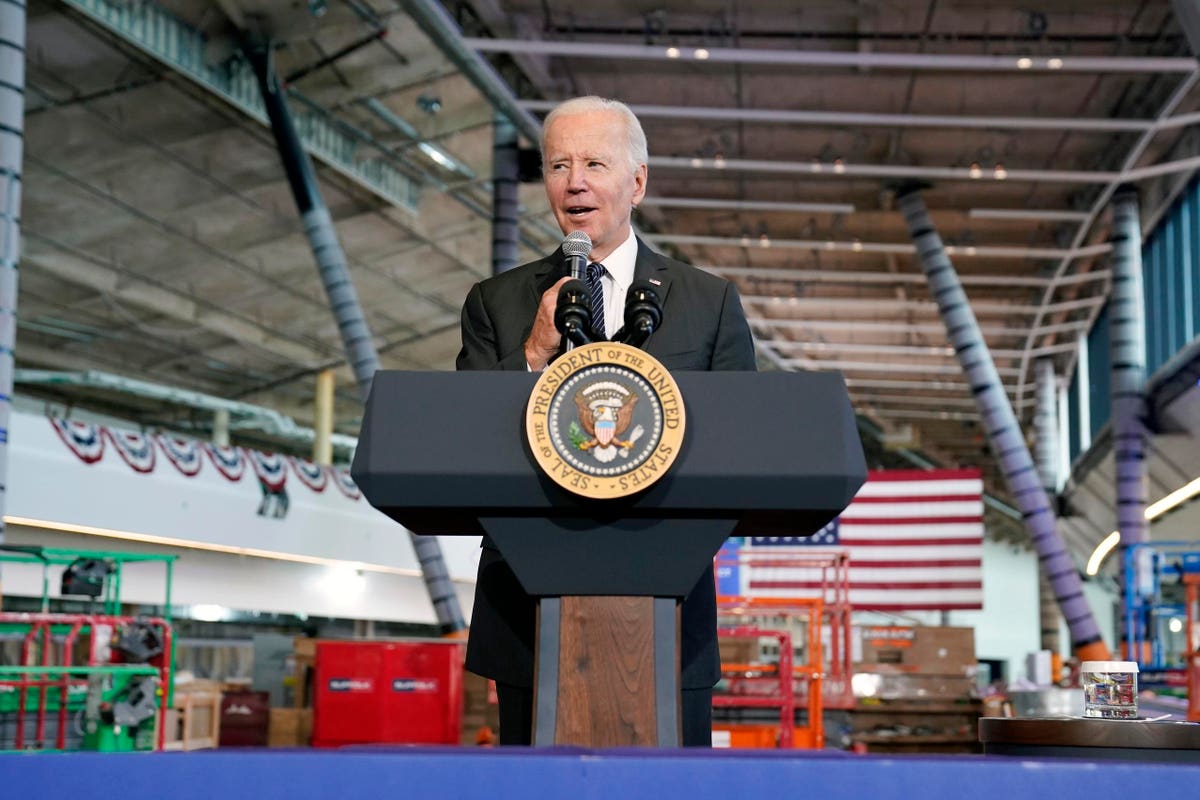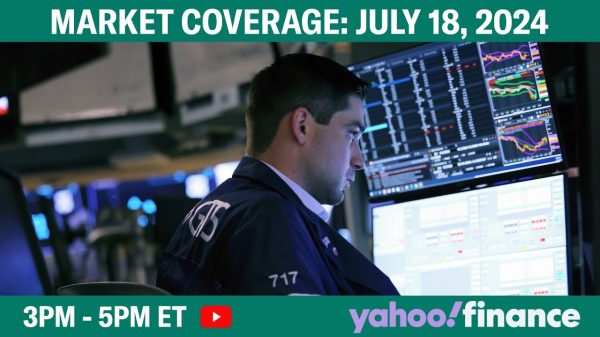Two years ago, on Nov. 15, 2021, the Bipartisan Infrastructure Bill was signed into law, and billions of dollars were allocated to flow to everything from railroad infrastructure to new wireless cellphone towers and EV charging stations.
Usually, Wall Street loves to chase stimulus, and this was one of the Biden Administration’s two biggest spending laws (the other one was the CHIPS & Sciences Act signed into law in June 2022). Timing is everything with investing, so one-year and year-to-date snapshots are not indicative of the gains investors made in these stocks, especially in new industries like EV charging stations, which saw a huge bounce in 2021 and then lost those gains soon after.
Here is a glance at how companies that were beneficiaries of the Infrastructure Law have fared versus their benchmarks.
EV Charging Stations: Still Down & Out
Part of the law included some $1.5 billion over roughly an eight year period to help finance the construction of EV charging stations covering approximately 75,000 miles of highway nationwide. Tesla
TSLA
Blink Charging Co. (BLNK) is a classic example of buy the rumor, sell the news. Its share price rose like the Superman rollercoaster at Six Flags Amusement Park, then nose-dived and is down around 38% since mid-November. It’s best to compare it to Nasdaq, because the EV charging company is listed there. Nasdaq is up nearly 17%. Investors who started the year off bullish on EV chargers like Blink because of the Biden Infrastructure Law have lost 44% of their capital, while Nasdaq is up 31%.
Blink rival ChargePoint Holdings (CHPT) did not do any better. The time to buy was when Biden won the White House and the time to sell was when Biden signed the $1.7 trillion infrastructure spending bill. ChargePoint is down 33% since mid-November, but has had a better year than Blink. Their shares are down around 8%.
Prior to the law, Tortoise Acquisition II, a special acquisitions vehicle, or SPAC, traded on the NYSE. They used their IPO to buy Volta in the first quarter of 2021, then traded under the ticker VLTA. The stock went from around $10 a share to $18 on that deal, then fell back to $10 before the company was finally bought out by Shell Oil in mid-January 2023. The Tortoise SPAC investors did well in the super short term, but Volta quickly became a penny stock. Shell bought it for $0.86 a share. Shell will likely keep this infrastructure handy and wait for more EV adoption before really investing in expansion.
In 2021, when an infrastructure bill was merely a Capitol Hill rumor, Shell said it planned to build 500,000 EV charging stations nationwide by 2025, or roughly 125,000 EV stations per year for the next four years. According to Volta’s website, there are 3,076 Volta charging stations in all 50 states. Shell’s Recharge Network, which Volta will now be a part, has even less. Most of Shell’s EV chargers are in California. None are in New York. Their EV charging station map shows that the British oil giant is light years behind in reaching 125,000 EV stations per year to hit the 2021 professed target of 500,000 EV chargers, even with the infrastructure law.
Shell did not return requests for comment.
Heavy Equipment: Bridge to Nowhere?
This has been the best sector so far.
The U.S. Department of Transportation and Federal Highway Administration announced approximately $120 billion in spending for highways and bridges for 2022 and 2023. Some 2,800 bridge projects have launched, according to the White House. This doesn’t mean all the money was spent. Does it make for good sentiment for heavy equipment companies like Caterpillar
CAT
The Department of Transportation estimates around $3 billion for roads and bridges. Companies are applying for those contracts now for this year and next year. The full money allotted is often much greater than what is appropriated. Much of the money goes to private consultants and engineering firms, not publicly traded companies, though their products may be sold or used in these projects. Contracts are in the few million to tens of millions. A bridge project in Michigan over the Saginaw River in Bay City was awarded $73 million. This money goes to the state, and they pass it on. There’s no word yet on who’s getting this project, but let’s assume they’ll use some equipment from these guys below.
Caterpillar (CAT) shares are beating the S&P 500. They are up around 20.4% since Nov. 15, 2021, while the S&P 500 is down around 3.4% over the same time. The stock is up only around 3% year-to-date, while the S&P 500 is up over 16%.
Terex
TEX
Solar Energy: A Mixed Bag, Except for First Solar
The infrastructure law gives incentives to both manufacturers of solar panels and solar cells, to buyers like the big utilities. A few companies have announced expansion of solar manufacturing plants because of the law, and China has announced first-ever forays for some of its biggest companies, to set up shop in Arizona and Ohio.
Utility companies will benefit from the incentives, but the market seems to like the manufacturers more. For investors who bought the infrastructure law news, rather than sell it, Ohio-based First Solar (FSLR) is up 63.4% since Nov. 15, while Florida-based utility known for using solar, NextEra Energy
NEE
Year-to-date, First Solar shares outperform the market, up 27% versus NextEra, down 11%.
Investors might want to avoid China solar stocks due to political risk. JinkoSolar, which has a solar panel manufacturing site in Jacksonville, Florida and will surely benefit from tax breaks, has seen its share price fall over 20% since Nov. 15. Year-to-date, Jinko is up 8.6% and while that is better than NextEra, it’s not better than the S&P 500.
Solar installation company Sunrun
RUN
Another playoff of this is Israel-based SolarEdge Technologies (SEDG). They are part of the solar and EV battery supply chain but do not make solar panels, nor are they installers. They make inverters and power optimizers. Their shares are down 24% since the law was passed. Shares of both companies are down so far in 2023, despite the spending ramp-up for their core business.
Infrastructure Investment: A Stimulus Play or Not?
In the markets, stimulus is always good. When the government throws money at something, investors want to be there to try and catch it. Then, they all realize it becomes too hard. The room is too crowded. And they leave. The main beneficiaries of the infrastructure bill – namely clean energy-related industries – mostly did well during the build-up to the law’s signing. Since then, it’s been back to normal.
There are a number of infrastructure-focused investment products out there, mostly all of them with a global view.
Goldman Sachs Asset Management’s infrastructure team divides their infrastructure funds into four core sectors – logistics (think data warehouses for cloud computing networks and Amazon
AMZN
BlackRock’s
BLK
GBX
NRG
Fidelity’s Infrastructure Fund (FNSTX) is split between U.S. and the world almost 50/50, and as a result of the inclusion of emerging markets in the portfolio, the fund has underperformed the iShares ETF. So far this year it up 6.2%, which is better than the Dow Jones Industrials, up just around 4%.
Fidelity’s biggest emerging market holding is Mexico, accounting for just under 8% of the fund as of May 31.
One of Mexico’s biggest infrastructure plays is cement maker Cemex (CX). Their U.S. subsidiary, Cemex USA, should easily be a beneficiary for any expansion and improvements of highways and bridges in the U.S.
Cemex shares are up 71.8% year-to-date.
Other global infrastructure stocks are traded in London, Hong Kong, or over-the-counter. China-based Zoomlion has a North American unit that will benefit from infrastructure spending in the U.S. They make earthmovers, concrete pumps and tower cranes, to name a few. The stock is hurt by China’s political risk and China’s Zero Covid policy, which is now defunct. Its shares are down 29% since Nov. 15, underperforming the MSCI Emerging Markets Index, which is down around 23%. China has been dragging down emerging markets for the last three years. Zoomlion shares are still down this year by about 1%.
Although not an emerging market, Japan’s Caterpillar competitor, Komatsu, is up only around 4% since Nov. 15, beating Caterpillar this year, up 26.9%.
Further afield in the riskier frontier lands, Kazakhstan’s KazMuniGas, an integrated oil and gas company, has been selling shares to foreign investors in the country’s privatization program. Foreign investors are still waiting for this IPO, estimated to be valued at around $6.5 billion.
Their neighbor, Uzbekistan, is thinking the same thing as a means to capture local and global investor interest in infrastructure investments.
“As one of the directors of United Cement Group (in Uzbekistan), I would like the company to develop further, including through an IPO,” said Andreas Kern, Member of the Board of Directors, of UCG.
United Cement Group has a total production capacity of just over 10 million tons of cement per year. Cemex’s installed capacity is 80 million tons.
An example of what UCGs corner of the world looks like: Arkadag, a $3.3 billion smart city in Turkmenistan, was built as a turnkey project from the ground up – and is now waiting for 70,000 residents to move in.
Unlike the U.S. Infrastructure Law, the future growth for UCG depends on the demand for cement within Central Asia and the Pan-Asian region where large infrastructure project have become a norm, with or without the China Belt and Road deal, while companies like Cemex will benefit more from U.S. spending.
Read the full article here













